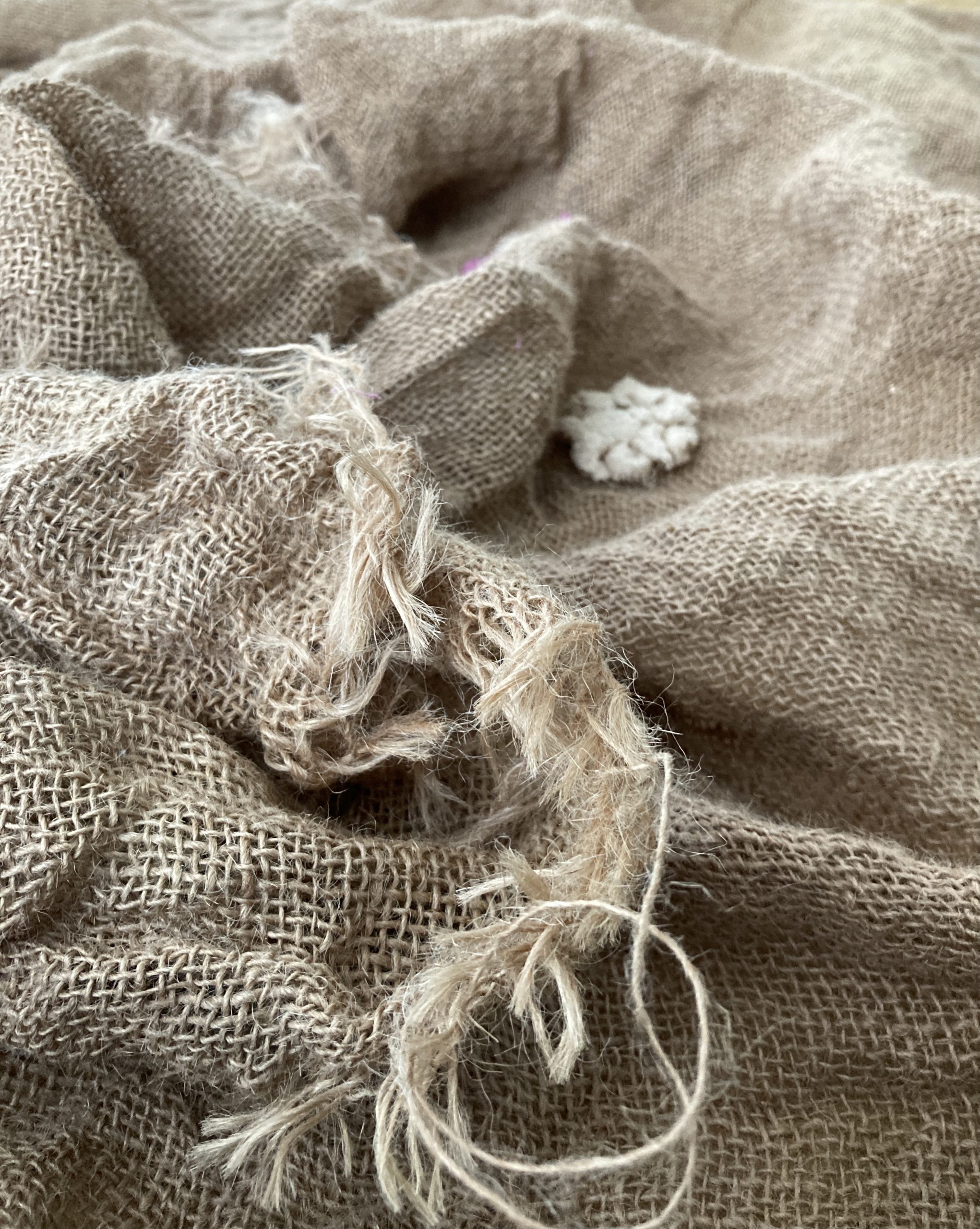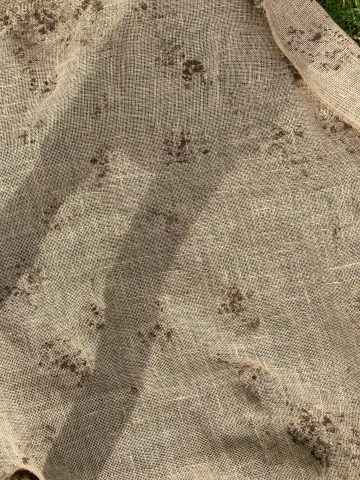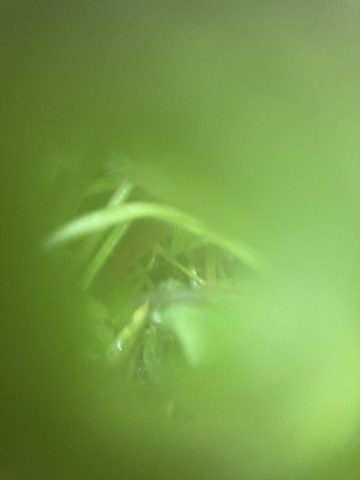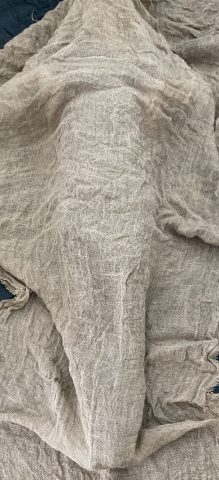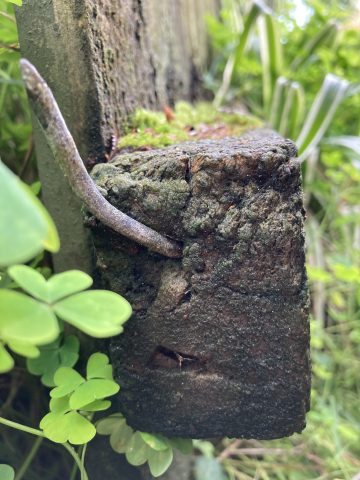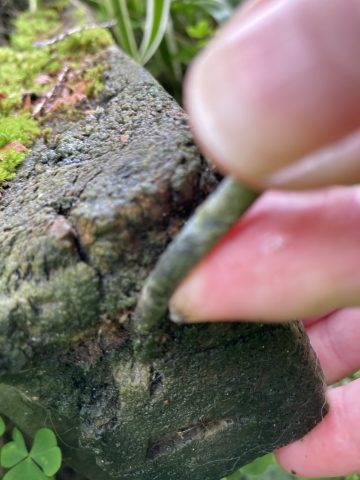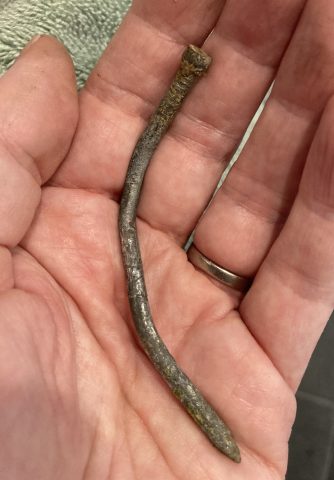Rag rugging emerged in the U.K. in the 19th century, when textile mill workers and their families began to repurpose the surplus and waste from the mills. The process involves cutting material into strips and hooking or looping this through a backing fabric to produce a new, strong, warm and typically functional item. Rag rug outcomes are original, textured, robust, and imbued with history and the spirit of their making.
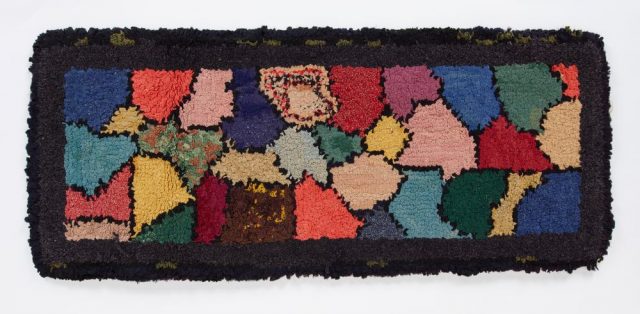
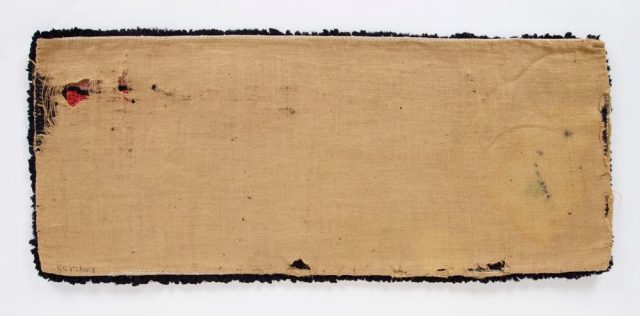
Hessian backing
Rhona Bayliss; maker/artist; 1930-1940; Hawke’s Bay. Approximate: 1140mm (length), Part of History Collection, Te Papa Tongarewa.
Rag rugging in Aotearoa was a popular domestic craft during the great depression (1930s and 1940s), a time when thriftiness and home economy was an imperative. Rosemary McLeod, author of Making DO in Hard Times writes that early rag rug makers in this country tended to work on a hessian foundation, which was cheaper than linen and easier to obtain. In this rug making tradition, strips of material were threaded through the holes in the hessian, reminding me of a rustic type of embroidery. The intent was usually to make a functional hearth rug, which in time would be relegated to a door mat, which might then become a mat for the animals.
Rug hooking was most often carried out by women, working within the home using basic tools, and well-worn or discarded fabric. Home-made tools were common, such as a piece of wood with a bent nail to use as a hook, to push the textile pieces through. Traditional rag rugs often exhibited similar traits such as a dark border, which was a practical way to camouflage dust; diamond patchy designs to represent the hearth and home and in some cases a red circle to ward off evil spirits. Makers would gather together, sharing resources, light, and sense of comunitas. This association with the domestic and the creative output of working-class women historically, is of interest to me.
With respect to my work with end of life towels, within the broader sphere of my practice, this rag rugging technique makes sense to me. Engagement in this labour intensive making tradition is a way for me to physically access the stories of women who have historically gathered and made during fraught times. I think about the hard life of my grandmothers, their strong work ethic and the sense of thrift that runs so powerfully through my veins.
I’m really exciting to be working with hessian as a foundation. I have a large piece that has been warming in the sun since last year, when I began to explore the qualities of this material. It has a strong odour that aggravates my nose and makes working uncomfortable, weirdly this is helpful to me as it drops my body into the making rituals of women during hard times. I remember laying the hessian on the ground in the backyard and walking over it in my gumboots. Around and around the edge I walked, like the needle of a seamstress making body-stitches in a ritualistic pattern. The hessian’s materiality was gauze-like, I felt like I was pressing a bandage onto the earth. The piece I used was more than body-sized, and so I lay on the hessian, and under it — I could become foetal. I filmed the backyard’s growth through the holes in the hessian. The holes were interesting to me. I felt as if I was burrowing through the earth into a magical world. This hessian is earthy and of the everyday, it is familiar — to me, and to place.
Walking on top of the hessian, looking through the hessian holes, and going beneath.
Now I endeavour to feed arm-lengths of towelling through these hessian gaps, to catch what is beneath and above, past and present — in a loop. I think about the corner I am studying and want to use this rag rugging technique in my response to being with place. I decide to draw out one of the rusting nails from the exposed fence, to use as a hook.
And so the process begins. I’m not setting out to make a functional rug, but I am using rag rug techniques. I will follow the flow of the materials in relationship and see what happens.
References
McLeod, Rosemary. “Making DO in Hard Times” in Crafting Aotearoa, Craft and the modern, chapter 6.
